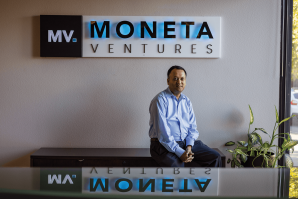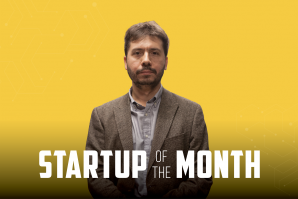The road to investing is wide and full of many different kinds of drivers that often overlap. Here is a basic guide to understanding how various investors work and what makes each one unique:
Family and friends typically come aboard very early on a startup’s path, contributing funds to help jump start a new business with what you might call pre-pre-seed money.
These early rounds can vary greatly with the average around $50,000 to $100,000 for the collective investment. Individually, people tend to invest much smaller around $2,000 to $3,000, but up to $50,000.
Accelerators and incubators provide startups with guidance and resources. While these organizations — such as Venture Catalyst at UC Davis, FourthWave, Y Combinator and Berkeley Skydeck — typically don’t have a fund or investment capital, many operate as hybrids that do have a small venture fund they manage, such as the Growth Factory, which invests in early-stage companies. Another example would be Evolution Accelerator, which launched as an accelerator, but later expanded with its own investment group called Evolution Ventures.
Incubators don’t typically invest directly or they invest smaller amounts, maybe up to $25,000, usually through services rather than cash. Accelerators, which may also include services in lieu of cash, typically offer investments of between $100,000 to $500,000 (all with a standard set of valuation/equity terms).
According to John Peters, chairman and president of the Sacramento Angels, the minimum investment has gone up in the last three-to-five years, due partly to competition between accelerator programs to attract the best startups (which has created pressure on the minimum investment).
Venture studios are organizations that create startups, typically by providing the initial team, strategic direction and capital for the startup to succeed. More hands-on than typical venture capital firms and offering strategic guidance like super-charged accelerators, venture studios receive equity or a regular payment for services.
Similar to accelerators, this amount varies by studio. They may just take equity in exchange for their services or they may directly invest ($100,000 to $500,000 or more).
Angel investors help startups they believe have potential by investing their own money, usually taking an equity position in the company they invest in. They can do this as individuals or part of a collective, or angel group, such as the Sacramento Angels. Angel investors invest in pre-revenue businesses but prefer companies in their early revenue stages.
Venture capitalists operate large (multi-million dollar) funds in venture capital firms such as Moneta Ventures, Black Star Fund and Impact Ventures. They invest in startups at various pre- and post-revenue stages, helping startups grow by providing both big money and expertise.
For seed stage rounds, it would be rare to see an investment below $500,000, according to Peters. At that stage you might see checks up to a few million dollars. Everything ratchets up from there: Series A $1 million to $10 million or more. Series B can be $5 million to $25 million or more. Those are good general ranges. Individual VCs rarely take the entire round, Peters says. It usually takes co-investors (other VCs or investing entities) to fill a round.
Private equity firms, such as DCA Partners, differ from VC firms by investing in companies that are more mature and profitable. They use capital to rapidly expand their businesses. Included here would also be CVF Capital Partners, which manages the Central Valley Fund. They provide a type of business loans, known as mezzanine financing, which can include both debt and private equity to companies.
Private equity firms usually invest in more mature/later-stage companies with large checks ($5 million up to $100 million or more). They’re looking for solid returns in a three-to-five-plus year horizon. They get their return via repackaging the company for M&A, IPO or additional institutional investors, Peters says.
Note: The goal of all venture investing is to get a return when the startup achieves an exit at a higher valuation than the investment was initially made. Exits happen when the startup is acquired by another company or if they execute an initial public offering (IPO) and become a publicly traded company.
Stay up to date on business in the Capital Region: Subscribe to the Comstock’s newsletter today.
Recommended For You

Startup Revolution
The Capital Region’s emerging startup community is attracting big investments
Since 2020, the global economy has been mired in uncertainty. On Oct. 5, 2023, investors and entrepreneurs convened at the Roebbelen Center @The Grounds in Roseville to address certain questions regarding business in the Capital Region.

Startup of the Month: Botanical Solution Inc.
Lab-grown plants offer key compounds for crop protection, vaccines
Grown in a lab from raw materials, so-called “baby trees” could be essential for protecting not only the future of fruits and vegetables, but also people. This is the aim of Botanical Solution Inc., a Davis-based ag tech startup with global roots.

The Student Loan Payment Pause Is Over. So What Are Your Options?
After more than a three-year federal student loan payment pause, payments resumed on Oct. 1, 2023. I have spoken to hundreds of borrowers and understand their confusion and concerns about returning to repayment and the options available for them.

Dilemma of the Month: What Happens When a Leader Gets Demoted?
I have an employee, Jeff, who is high up in his role at a very large company. He is among the top leaders of the organization. However, he is being slightly demoted due to his behavior and inability to meet the expectations of the role.




